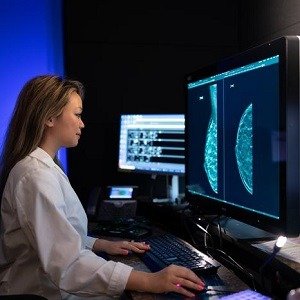Removing a modest $45 fee for 3D mammography led to a measurable increase in access to this advanced breast cancer screening—especially among underserved communities, according to a new UCLA study.
Digital breast tomosynthesis, or 3D mammography, offers clearer images and fewer false positives than traditional methods. But even small out-of-pocket costs can deter patients from choosing it. After UCLA eliminated the fee in 2021, usage jumped from 83.7% to 91.5%. The gains were even more striking among historically marginalized groups.
Asian, Black, and Hispanic women saw increases of 5.0, 6.2, and 6.2 percentage points respectively beyond the gains seen in white patients. Non-English speakers experienced a 7.1 percentage point greater increase than English-speaking patients. Medicaid recipients and those from lower-income areas also benefited more than average.
“These findings demonstrate that even modest out-of-pocket costs can create meaningful barriers to accessing advanced screening technology,” said Dr. Nina M. Capiro, lead author and UCLA Health radiologist. She emphasized that while the fee removal helped, “persistent disparities indicate that additional approaches are needed.”
The study used a difference-in-difference analysis to isolate the impact of the fee change across 13,284 women. All had access to both 2D and 3D mammography at the time of screening.
Researchers say the results offer a model for evaluating how financial policies affect health equity. But they also caution that eliminating fees alone won’t erase disparities—more comprehensive strategies are needed.
See: “Effect of Fee Removal on the Usage of Digital Breast Tomosynthesis to Minimize Healthcare Disparities” (June 19, 2025)



